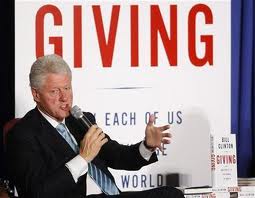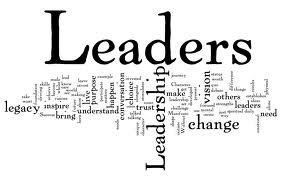 This week at DonorDreams we are talking about what it looks like to be a fundraising “LEADER”. Today, we cap the week off by looking at one smart teenager and a few organizations that provide “thought leadership” in the area of charitable giving. I hope this week’s series of blog posts on fundraising thought leadership inspired you to become a teacher in your little corner of the world when it comes to philanthropy.
This week at DonorDreams we are talking about what it looks like to be a fundraising “LEADER”. Today, we cap the week off by looking at one smart teenager and a few organizations that provide “thought leadership” in the area of charitable giving. I hope this week’s series of blog posts on fundraising thought leadership inspired you to become a teacher in your little corner of the world when it comes to philanthropy.
I’ve spent most of my life working in the youth development field. If there is one thing I know, it is that kids know everything. Just ask them! LOL So, it shouldn’t come as a surprise that at 14-years-old Freddi Zeiler wrote a book that “teaches us” how to: give time and money, donate goods, and organize charity events.
The book is titled “A Kids Guide to Giving“. I highly recommend that every fundraising professional secure a copy because we can all learn a lot as fundraising leaders from Freddi’s TPOV.
In Wednesday’s post titled “What is your teachable point of view around fundraising?” I talked about the importance of leaders developing their TPOV. Apparently, no one had to teach Freddi the importance of this idea because her TPOV came through loud and clear. To give you just a little taste, here are a few of the “ideas” she puts forth on fundraising:
- Look into your heart.
- Support a cause you love.
- There are lots of ways to help!
- You can make a difference.
It takes some non-profit professionals and volunteers a very long time to learn these inspirational and fundamental fundraising lessons.
As we talked about in Tuesday’s post titled “Are you and your non-profit agency fundraising leaders?” Noel Tichy believes that leaders are teachers. This aligns with what I think and how I end most of the posts here at the DonorDreams blog when I say: “we can all learn from each other”. It is for this reason I highlighted Freddi this morning as a fundraising leader. However, leaders don’t necessary have to be individuals . . . they can be organizations that embody and bring to life inspirational ideas, values and emotional energy and edge on the topic of philanthropy and fundraising.
Two such organizations in my mind are The Robin Hood Foundation and United Way of America.
 The Robin Hood Foundation has been in operation since 1988 and focused on eliminating poverty in New York City. What I love about this foundation is their TPOV:
The Robin Hood Foundation has been in operation since 1988 and focused on eliminating poverty in New York City. What I love about this foundation is their TPOV:
- The foundation focuses on attacking the “roots” of poverty and not throwing money at alleviating the symptoms;
- The foundation doesn’t just write a check and walk away from the project. They roll up their sleeves and partner with their grant recipients by providing and securing technical assistance to help maximize the potential of the program they just funded.
- The foundation is results-oriented and helps their partners set goals, measure progress, collect data, and benchmark success. After working with their grantees on these parts of the project, they then hold them accountable to achieving all of it.
United Way of America is the grand-daddy of all philanthropic thought leaders in America. For the last 125 years, they have helped donors collectively find their philanthropic muscles and tackle difficult social problems in communities all across America.
 I could spend hours talking about United Way’s workplace campaign. I could also spend days talking about their community impact model that focuses on big goals like improving education, helping people find financial stability during tough economic times, or promoting healthy lifestyles and communities. While all of this is inspirational, the thing that most inspires me as a fundraising professional is how United Way empowers many individuals with its message around giving, advocating and volunteering.
I could spend hours talking about United Way’s workplace campaign. I could also spend days talking about their community impact model that focuses on big goals like improving education, helping people find financial stability during tough economic times, or promoting healthy lifestyles and communities. While all of this is inspirational, the thing that most inspires me as a fundraising professional is how United Way empowers many individuals with its message around giving, advocating and volunteering.
In my non-profit work throughout the years, I’ve bumped into too many people who are not wealthy and see themselves as tiny actors on the very large stage of life. These people have a hard time seeing themselves as philanthropists because they don’t think their ability to make a small charitable contribution will change anything. United Way works tirelessly as a “fundraising teacher” every year to empower donors.
The message that “even a few dollars per paycheck, when combined with everyone else’s few dollars, can change the world” is an empowering message and something we should all take to heart and learn to teach. We all need to dedicate ourselves to teaching donors how to make their money and time turn into something impactful. If every fundraising professional in America took this to heart, can you even imagine what those charitable giving pie charts published every year by Giving USA would look like? OH MY!
So, are you ready to embrace your professional calling as a non-profit fundraising professional or volunteer differently? What is your teachable point of view? What individuals (e.g. Bill Clinton or Freddi Zeiler) or organizations (e.g. Robin Hood Foundation or United Way) do you look to for inspiration to develop and inspire your TPOV?
Please scroll down and use the comment box to share your thoughts on these questions because we can all learn from each other”. 🙂
Here’s to your health!
Erik Anderson
Founder & President, The Healthy Non-Profit LLC
www.thehealthynonprofit.com
erik@thehealthynonprofit.com
http://twitter.com/#!/eanderson847
http://www.facebook.com/eanderson847
http://www.linkedin.com/in/erikanderson847






